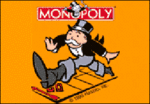
The lie is that mass market consumers must pay big bucks to fund quality content.
This was not true in the age of print. What you paid for the Times that landed on your doorstep last Sunday was not for the writing and editing. You paid for the cost of getting that paper from the plant to you. Nothing else. Not the marketing, not the ads, not the executive salaries, certainly not for the editorial. That was an afterthought.
The proportion of a newspaper's budget going into editorial has never been more than 8% of the total. The rest went for distribution, production, marketing, ad sales, and executive salaries. So how then do you justify a big fee when distribution is essentially free and when the customers are coming to you?

I have great admiration for the editorial work done by editors and writers at the Times. I always have. But I'm going to live without it. There are already signs the Web is fighting back:
-
Google News has already reduced the number of main page links to Times content, in favor of non-pay sites like those of the TV networks and other large newspapers. The Wall Street Journal becomes an innocent bystander drilled in this action. They have long been a pay site, but over several years had found ways to compromise with the Web, offering content free when it was behind a favored link. Since the Times isn't playing this game, the Journal is losing many links.
-
What about sites like MSNBC and The Huffington Post that routinely use Times' content now? Cutting off HuffPo cuts off traffic, and audience mindshare. Cutting off MSNBC cuts out income.
-
What about any site that routinely links to what it's talking about? I'm not going to link to a pay site. Neither is anyone else with a Clue. And gradually we'll all learn not to read or link to such sites. A pay site is a cul de sac.
-
A cul de sac can work when you have a narrowly-defined audience, by the way. Most medical sites are cul de sacs. So are many vertical market business magazines. There is a small audience you want to read it, but you don't want most people doing so. Either they wouldn't understand or the advantage your chosen readers have would be lost – any such circulation isn't worth your advertiser's paying for.
-
Already, Times' columnists are finding themselves having to go on TV every day in order to maintain their visibility. Much of their working days are spent in TV studios. Why should they even come into the office? And once they figure that out, why will they ever come in? Talking heads make more money anyway.

My point being that this is much like the battle we won over Microsoft with software. It's an open source problem.
As soon as journalists generally realize that, the sooner readers and writers organize around it, the sooner The New York Times will either bring down its paywall and create a functional business model like that it had in the 1970s or simply cease to be.











Kimora Chadwell
Thanks for the post.Much thanks again. Keep writing.